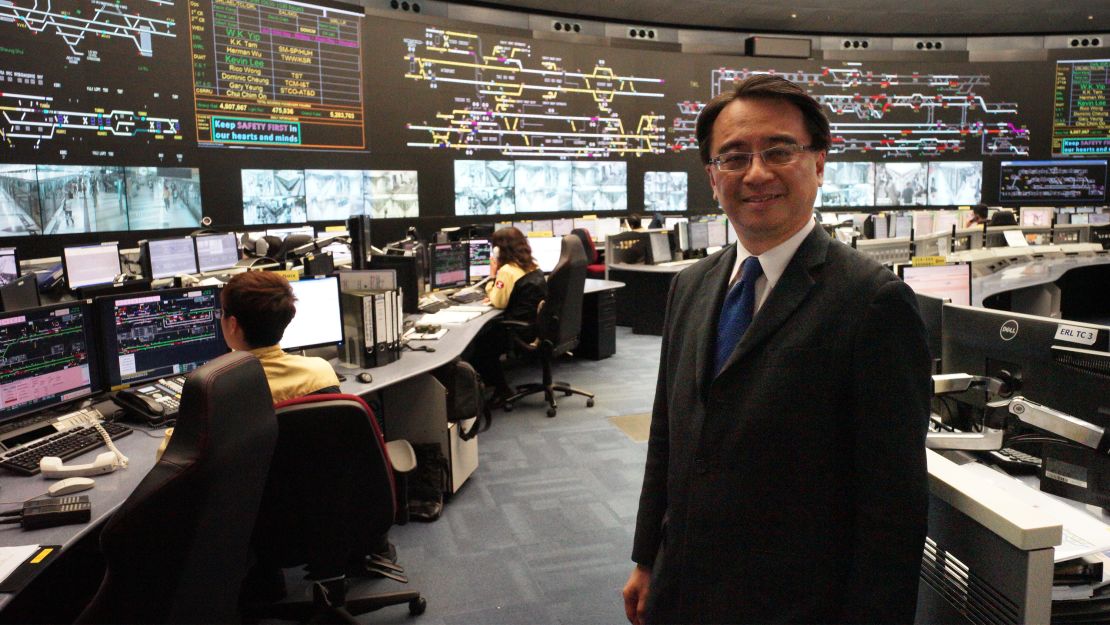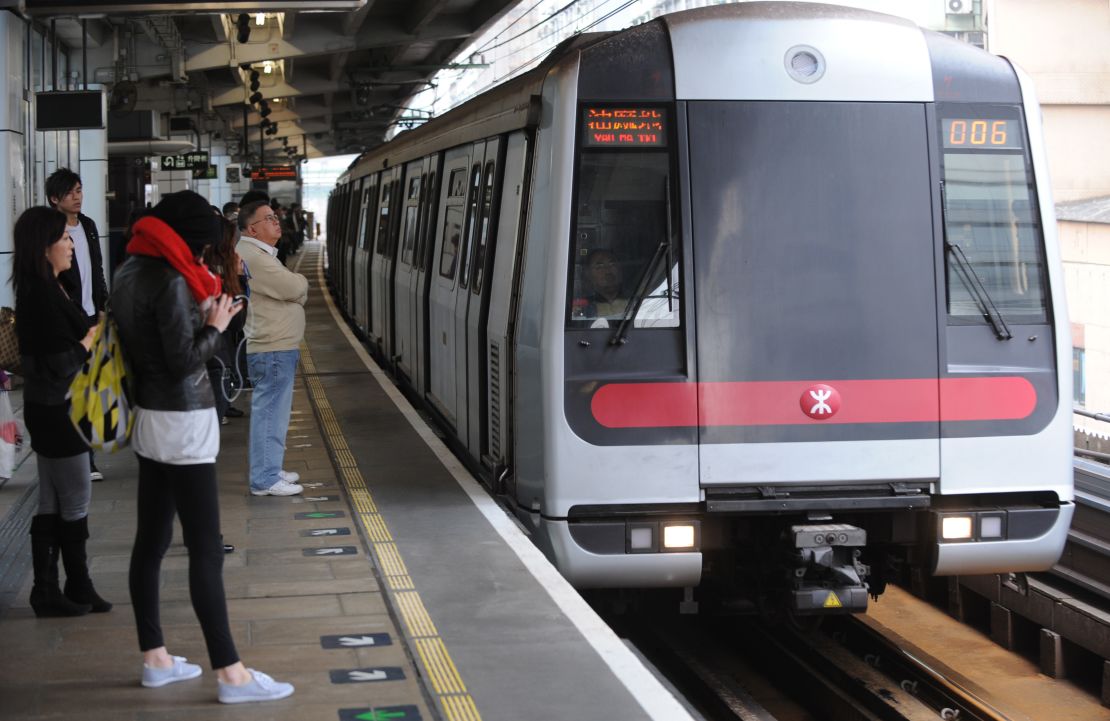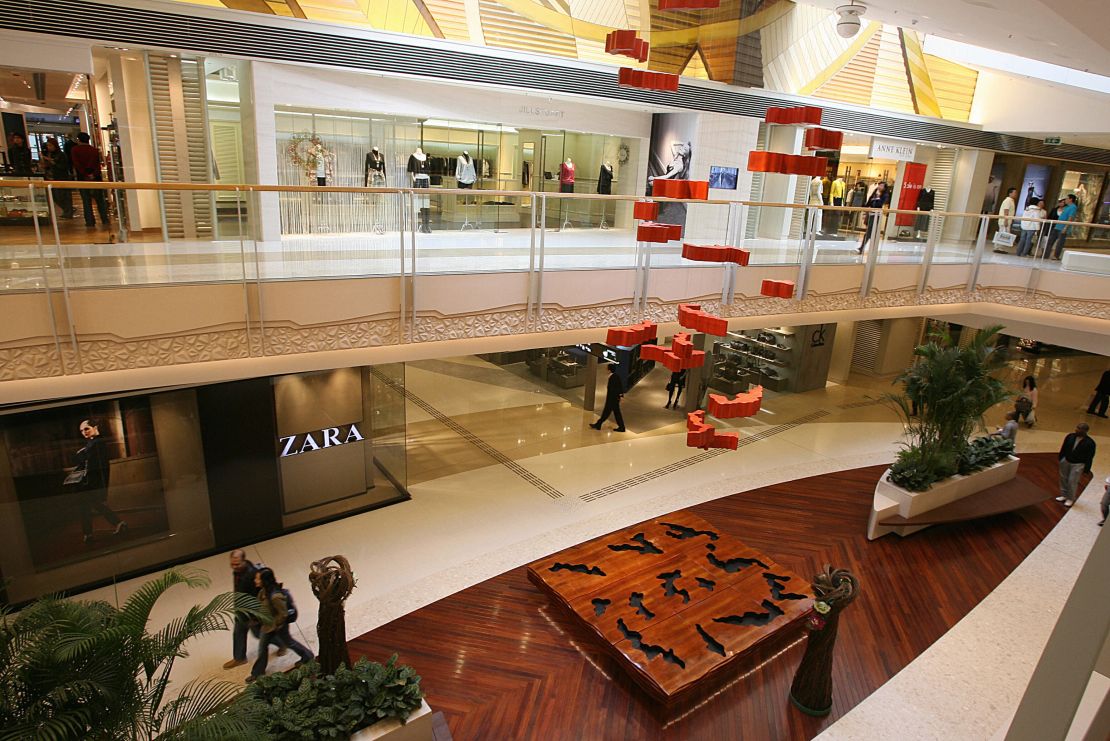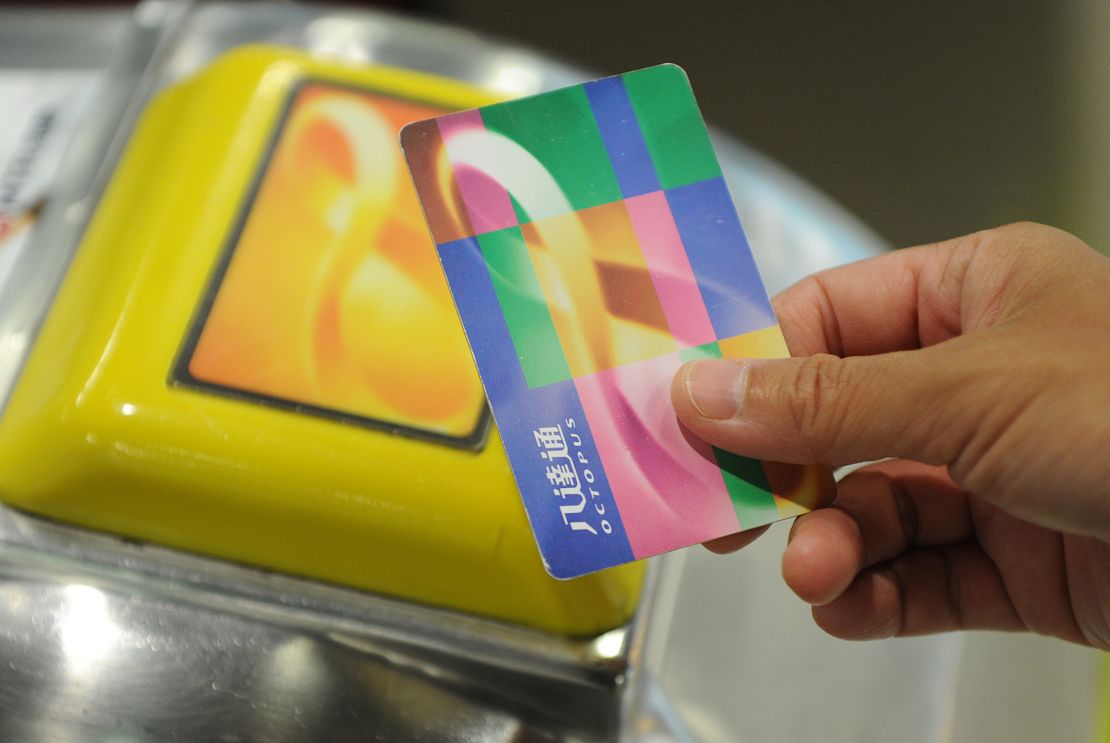Story highlights
Hong Kong's MTR system operates 2.8 million train trips per year with a 99.9% on-time rate
It recently spent $15 million renovating a NASA-like control center
An integrated Artificial Intelligence system increases efficiency
In a spacious, high-ceilinged room, rows of yellow-shirted controllers monitor a wide, curved video panel that spans the length of an entire wall.
In front of this space age-like console, staff keeps tabs on Hong Kong’s sprawling mass transit system, 24 hours a day, 365 days a year.
Everything is humming along normally on a recent winter day, until the black “incident box” at the center of the room suddenly jolts to life.
There’s a problem on one of the tracks.
Red digits on the box begin flickering madly, indicating the seconds elapsing since the start of the incident.
“The incident box is on, that means there’s an incident in one of the stations causing a delay,” says Jacob C. Kam, operations director of Hong Kong’s MTR (Mass Transit Railway) Corporation Limited.

It’s a highly unexpected and potentially embarrassing development in the course of a prearranged facility tour, but Kam stays calm.
With the digits on the box ticking upward – 33 seconds, 34 seconds, 35 seconds – Kam says, “We usually try to resolve every issue within two minutes.”
And they do this time – in just about one minute, actually.
MTR generally doesn’t release information about every delay or accident, but says the most common incidents result from passengers rushing train doors and sick commuters triggering emergency alarms.
After this episode, the incident box is reset and workers in the control room quickly resume normal operations.
Who owns the MTR?
The highly efficient and futuristic scene at the Super Operation Control Center (Super OCC) is located inside the Tsing Yi MTR station, part of Hong Kong’s renowned public metro network.
The MTR system was established as a public entity in 1973-74 before being privatized as the MTR Corporation in 2000.
The move was part of a series of initiatives by the Hong Kong government to dissolve its ownership in public utilities, with the aim of reducing expenditures and boosting overall efficiency.
The local government, however, remains the major shareholder (with 76% of the shares) of the MTR Corporation.
Though the private company is charged with serving the public and required to report its dealings to the government, it also has a mandate to remain competitive and profitable.
With around 1.6 billion passengers per year, it’s by far the most popular transportation mode in Hong Kong.
Passenger boardings increased with the opening of the new West Island Line earlier this year – the new line connects one of the oldest districts in Hong Kong to the network.
A handful of new lines will open over the next few years.
99% on-time performance

“Hong Kong’s MTR is one of the best designed, best operated and most successful metro systems in the world,” says Robert Cervero, professor of city and regional planning at UC Berkeley.
Jin Murakami, an associate professor at City University of Hong Kong who published a study on the MTR in 2009 with Cervero, shares that opinion.
The system is world class, says Murakami, “especially in terms of finance, operation service and transit-property integration.”
Despite having less track than other major metropolitan subway systems – London has 402 kilometers of line, New York City has 373 kilometers – the 218-kilometer MTR system carries more than five million passengers daily.
That’s more than London and almost the same as New York.
Running about 20 hours and 8,000 train trips per day, MTR boasts a staggering 99.9% punctuality rate, according to the corporation.
In the first half of 2014, the system ran for 120 consecutive days without a single delay over eight minutes, establishing a record for the company (if not the world).
As remarkable, all this getting around comes at a cost of only about $1 per trip, on average.
“My colleagues keep reminding me to be modest,” says Kam. “But to be fair, we set international management benchmarks every year, and our performance is among the very best in the world.”
Having lived in London for 16 years, Kam grins when asked to compare the London Underground with Hong Kong’s MTR.
“I can’t give my honest comment,” says Kam. “London has its own challenge, it’s very old. It’s one of the oldest subway systems in the world.
“But in recent years, they have invested a lot of money into the system so now the service is actually much better.”
International expansion
MTR’s influence has spread overseas, luring international clients seeking to emulate its success.
MTR Corporation now operates the London Overground, and two lines of the Beijing Metro, as well as parts of the Shenzhen and Hangzhou Metro systems in China, the Melbourne Metro in Australia and the Stockholm Metro in Sweden.
In 2014, it won a contract for a new rail project in Sydney. As part of the $6.5-billion deal, the MTR Corporation will deliver and operate the Australian city’s North West Rail Link, the largest public transport project in the country and its first fully automated rapid transit network.
MTR also provides consultation services to railway networks around the world.
According to a 2013 report in the Wall Street Journal, these overseas operations have improved both the network’s punctuality at home, as well as its profitability. London Overground enhanced its punctuality from 88.4% in 2007 to 96.7% in 2013 after MTR took over its operation for a year.
Ongoing investment crucial to success

The ability to continuously reinvest profits back into its system has been key to the MTR’s continuing success and growth.
“A railway requires ongoing investment and a lot of resources in order to keep it in tip-top form,” says Kam. “Even for a system considered state of the art, in 10 years time, everything – signaling systems, urban railways – will have changed.”
Each year, HK$5 billion ($645 million) is invested in maintenance, upgrades and renewals to the system.
It’s a significant amount compared with many other cities and systems, says Cervero.
A major project in recent years has been the Super OCC (where that flashing “incident box” went off), which cost the company HK$117 million ($15 million) to complete.
The Super OCC brings management of all control centers for different lines in the network into a single room, greatly improving connections and communications between lines.
Hidden behind a series of heavy doors, the Super OCC is “the central nervous system of the railway in Hong Kong,” says Kam.
During the day, the large screen – or mimic panel – shows the movements of trains on each line, as well as the situation on each platform.
After public operations hours (MTR trains stop running between approximately 1-5 a.m. each day), it serves as the control center for after-hours maintenance work on tracks.
“Grouping all the lines into one control room is important,” says Kam. “Because it’s an interlinked network, passengers may travel from one line to another line. If one line is disrupted, we have to make sure the others are managed properly to compensate for the lost time.”
The Super OCC is also the center of power supply, ventilation control and communications – both internal and external – for the network.
How MTR earned $1.7 billion in a year
Operating such a massive and critical transportation network doesn’t come without challenges.
In 2014, the delayed opening of the West Island Line and South Island Line (another planned line) cost the company $386 million above projected costs.
Increasing revenues enabled the company to absorb the losses, but the delays were still considered a setback.
Nevertheless, MTR turns out an enviable financial report year after year, with profits coming both from transportation operations and outside investments.
In the first half of 2014, the company recorded gross revenues of HK$13 billion ($1.7 billion), excluding revenue from overseas operations.
That resulted in a net profit of HK$7.9 billion ($1 billion).
Part of that profit comes from ticket sales, another aspect of operations that makes MTR special.
“Hong Kong MTR is one of the few metro systems in the world that generates net operational income strictly from its railway business,” says Murakami.
In fact, Hong Kong has the world’s highest “fare box recovery rate” – the percentage of income derived from ticket sales weighed against operating expenses – typically returning between 150-180%.
That incredibly high fare box recovery rate can be attributed in part to the city’s densely packed population – as Cervero says, taking the metro is a “no-brainer” for commuters in Hong Kong – as well as the efficiency and reliability of the system.
“The fare box recovery of U.S. metro systems is around 60% at best and many others are also less than 100%,” says Murakami.
In addition to income from ticket sales, MTR earns a large amount of its money from investments in the property market.
MTR sells land it owns, manages third-party properties, builds shopping malls and rents out real estate, to name just a few ways it exploits it holdings.
“There is no other transit system worldwide that gets such a large share of its revenues from non-fare box sources,” says Cervero.
Click here for a more in-depth analysis of MTR’s unique financial strategy
Ironman of the metro industry

Hong Kong’s MTR might be called the Ironman of world metro systems.
Apart from being profitable and efficient, the company employs a range of high-tech tools to aid operations.
After the last trains depart from stations at about 1 a.m., more than 1,000 workers spring into action to maintain the system.
“Because of the high demand for track space and the small amount of down time, we need to quickly move engineering trains, deliver materials and provide space for people,” says Kam. “We have an A.I. system that helps us optimize the use of space in a limited time.”
The program was specially designed and built for the MTR.
“We also apply a lot of radio-frequency identification technology that helps monitor the condition of the trains and machinery and gives us an early warning in case of potential problems,” he says.
Infrared monitors on tracks are used to detect cracks too small for the human eye to detect.
The company also owns Hong Kong’s ubiquitous smart payment “touch and go” system, Octopus.
The smart card allows passengers to pay fares – not just on MTR but on other public transportation systems – by swiping the Octopus against a card reader.
So indispensible has the card become that more than 99% of Hong Kongers now own an Octopus card.
The super-convenient card also allows users to pay for parking, meals in restaurants and goods in many retail and grocery stores. It’s also often used as an access card to enter residential and office buildings.
The Octopus card generated more than $12 million in net profit for the company in 2014.
“We use man to do what machines can’t do, and machines to create efficiency and accuracy that’s beyond the reach of man,” says Kam, summing up a principle that’s made Hong Kong’s MTR the envy of the world’s mass transit systems.











